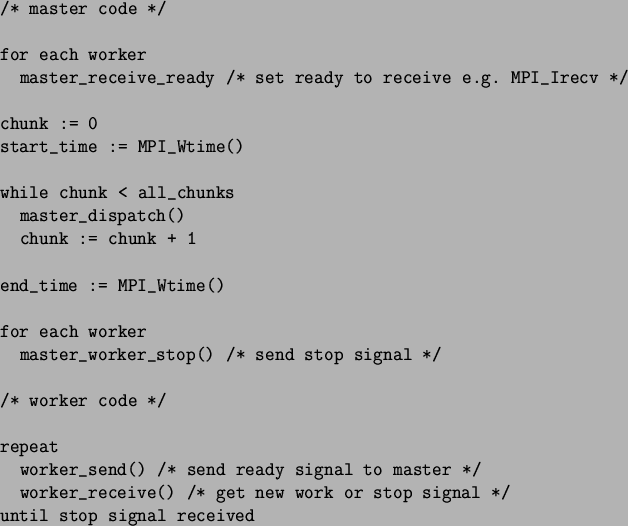



Next: MPI_Bsend-length
Up: Measurements of SKaMPI, Version
Previous: p2p_dummy
Contents
Master-worker pattern
The Master-worker pattern corresponds to the typical
master-worker scheme: a master process divides a problem into several
sub-problems (here called chunks) and dispatches them to several worker
processes (master_dispatch). The workers initialize with master_receive_ready (perhaps a MPI_Irecv if necessary) and
subsequently send results and receive new chunks of work with worker_send and worker_receive. When all work is done,
the
master sends a stop-signal to the workers (master_worker_stop).
This scheme is important in practice, because it is the simplest method to do
load balancing.

Subsections
Per Ekman
2005-02-16

